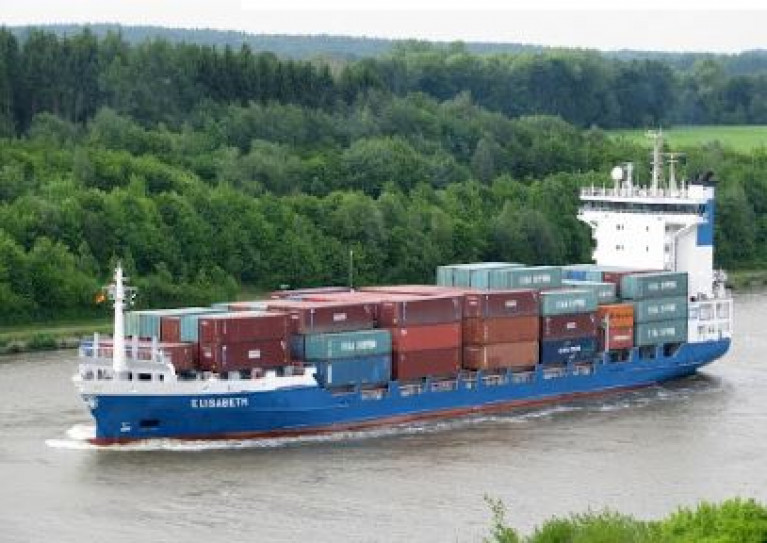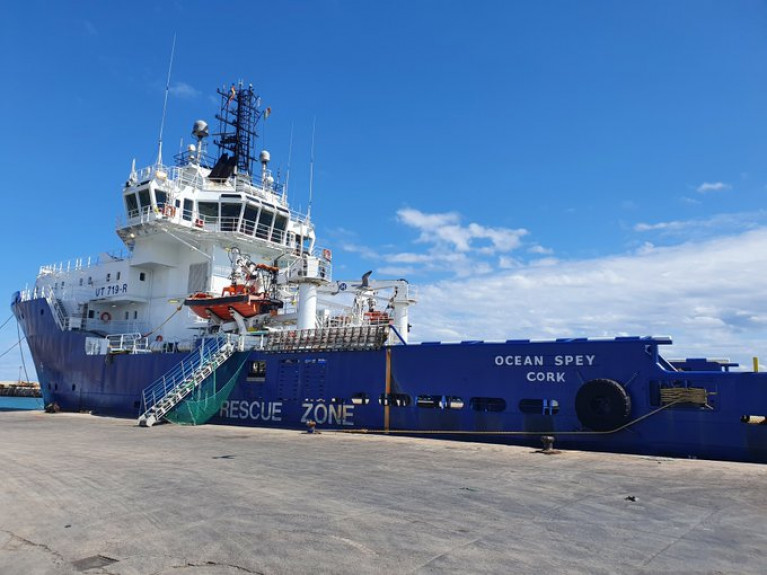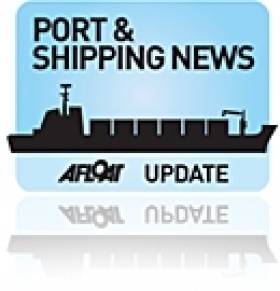Displaying items by tag: Mainport
Cork Agent Announces Unifeeder's Additional Dublin Port Call to Existing Feeder Services
Cork basedMainport which acts as shipping agent for container operator, Unifeeder A/S, has announced as of the start of this month that they have increased capacity between the Irish Sea and mainland northern Europe.
This has led to the deployment of a larger (658 TEU) capacity vessel, the MV Elizabeth which Afloat observed departing Dublin Port this week when bound for Belfast Harbour.
The news according to the IMDO, comes despite all the challenges with widespread congestion in North Europe, where Unifeeder have managed to maintain a very strong schedule integrity along with very short transit times to and from the UK port of Southampton.
The UK-all Ireland port rotation is also ideal for empty positioning of containers from Dublin and Belfast to Cork. This upscaling has been very well received by customers, deep sea lines and cargo owners.
Cork Harbour's Mainport Based Vessel Is Bid Farewell As the Final Kinsale Gas Field Support Ship
The Cork Harbour based Ocean Spey has been sold by the Mainport Group which operated the supply/standby support vessel for the past five years at PSE's Kinsale Gas Field which was decommissioned this year, writes Jehan Ashmore.
According to Mainport, the Ocean Spey departed their fleet and made a delivery to Castellan, Spain to new owner, Open Arms.
Afloat add Open Arms is a Barcelona based non-profit organization that aims to protect the lives of the most vulnerable, provide first-aid at sea and in operating refugee rescue vessels in the Mediterranean Sea.
The 66m Ocean Spey, Afloat noted on AIS made its last departure from Rushbrooke last month and arrived a week later to Burriana, located south of Castellan, where the Irish tricolor was lowered for the last time.
The Cork registered 1,864grt ship which Mainport acquired in 2016, had serviced the two Kinsale Gas platforms, located approximately 50kms off the south coast from where gas was first extracted in the late 1970's. As Afloat reported earlier this year, the gas had depleted, leading to the decommissioning of the gas field subwells and likewise associated platforms.
The role of the Ocean Spey in the Celtic Sea followed a succession of ships that Mainport was contracted to provide the gasfield with services for more than 35 years and through various owners. A slightly smaller vessel, Pearl of 1,579grt had performed the same role until Mainport disposed of this vessel.
Ocean Spey which has anchor handling capabilities was built in 2000 and had previously worked in the North Sea based out of Aberdeen, the oil capital of Scotland.
Mainport to Invest in Survey Supply Vessels for Exploration Industry
#PORTS & SHIPPING - Cork based marine services company, Mainport is investing $36 million (€27.6 million) to build three supply vessels which will support seismic survey ships searching for oil and gas deposits.
The bulk of the financing for the construction of the newbuildings has been provided by Dutch bank ABN Amro, with a syndicate of Irish investors assembled by Westboro Finance in Cork providing $5 million in mezzanine, or short-term, financing.
The three ships, which will provide support services for an unnamed client carrying out off-shore seismic surveys around the world, are being constructed at Shin Yang Shipyards in Malaysia, and will be delivered in mid-2013.
To read more about this report in today's Irish Times click HERE






























































